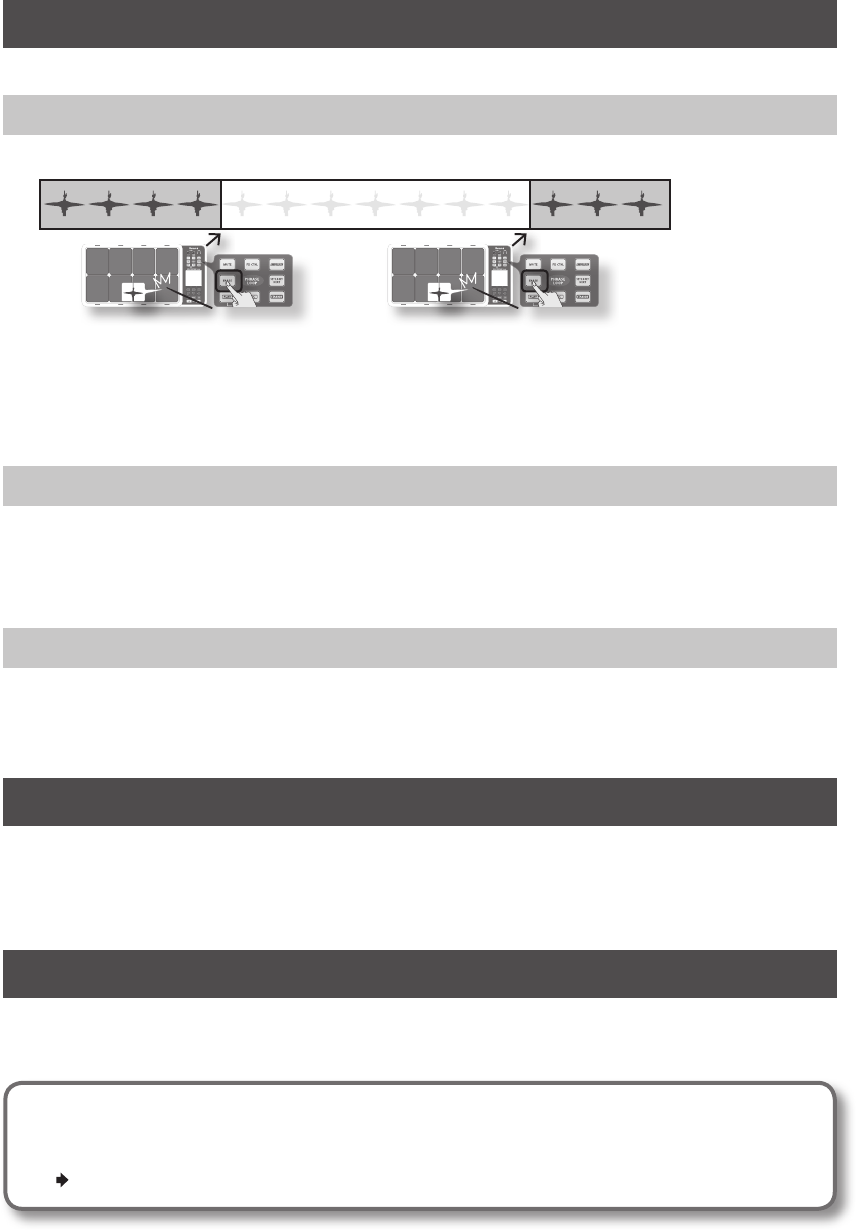
28
Re-doing the Recording
If you want to re-do the recording, it’s easy to use the following methods.
Erasing a Track (ERASE)
During playback or recording, you can erase just the track of a specic pad.
Start erasing Stop erasing
1. Hold down the [ERASE] button, and when you want to start erasing, hit the pad whose track you want
to erase.
That pad’s illumination will blink while its track is being erased.
2. Hold down the [ERASE] button, and when you want to stop erasing, hit the pad whose track was being
erased.
Undoing a Recording (UNDO)
You can undo the previous recording or erasure. Perform the following step immediately after you’ve recorded or erased
data. You can’t undo once you’ve stopped the phrase.
1. In the PHRASE LOOP screen (during PLAY or REC), choose the QUICK MENU command Undo REC (or
Undo ERASE).
Clearing the Phrase (CLEAR PHRASE)
If you want to re-record from scratch, you can clear the phrase.
1. In the PHRASE LOOP screen (while stopped), choose the QUICK MENU command Clear Phrase.
2. When the conrmation message appears, press [Button 3] (OK).
Saving the Phrase (SAVE PHRASE)
The recorded phrase will be lost when you exit Phrase Loop mode, select a dierent phrase, or turn o the power. If you
want to keep the phrase, you can save it to internal memory or to USB memory.
1. In the PHRASE LOOP screen (while stopped), choose the QUICK MENU command Save Phrase.
When the SAVE PHRASE screen appears, save the phrase as described in the procedure on p. 49.
Exiting Phrase Loop Mode
In the standby condition (while stopped), press the [STANDBY] button to make it go dark; you’ll exit Phrase Loop mode
and return to the KIT screen.
* If you leave the phrase loop mode without saving your data it will be lost. (A reminder will appear in the screen.)
Advanced techniques
In addition to the Phrase Loop functions explained here, you can mute a specic pad, record knob movements
while you use the knobs to control an eect, or reserve the operation that will occur on the next loop.
For details, refer to “Editing a Phrase” (p. 46).


















